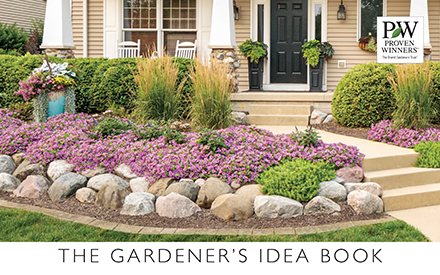10 Ideas for Designing a Hosta Garden That Wows
One of the most versatile and easy-to-grow perennials, hostas offer nearly endless design possibilities in the landscape
Anyone who has created a shade garden knows the growing challenges that shade can present. Hostas, which are grown primarily for their decorative foliage, are one of the most fool-proof plants for shady areas. Also known as plantain lily, these reliable long-lived perennials come in a wide range of colors, patterns, textures, shapes and sizes, performing well in most growing zones.
Hostas complement many other shade-tolerant plants, whether used as a background plant or assuming a starring role. They make an invaluable addition to beds, mixed borders, woodland settings, containers, foundation and mass plantings. With hundreds of varieties to choose from, some gardeners will even design an entire shade border using nothing but hostas.
Buy hosta plants - Order perennials online and have them shipped right to your door
Here are some hosta garden design ideas, along with basic principles to consider, to get you started.
HOSTA GARDEN DESIGN IDEAS
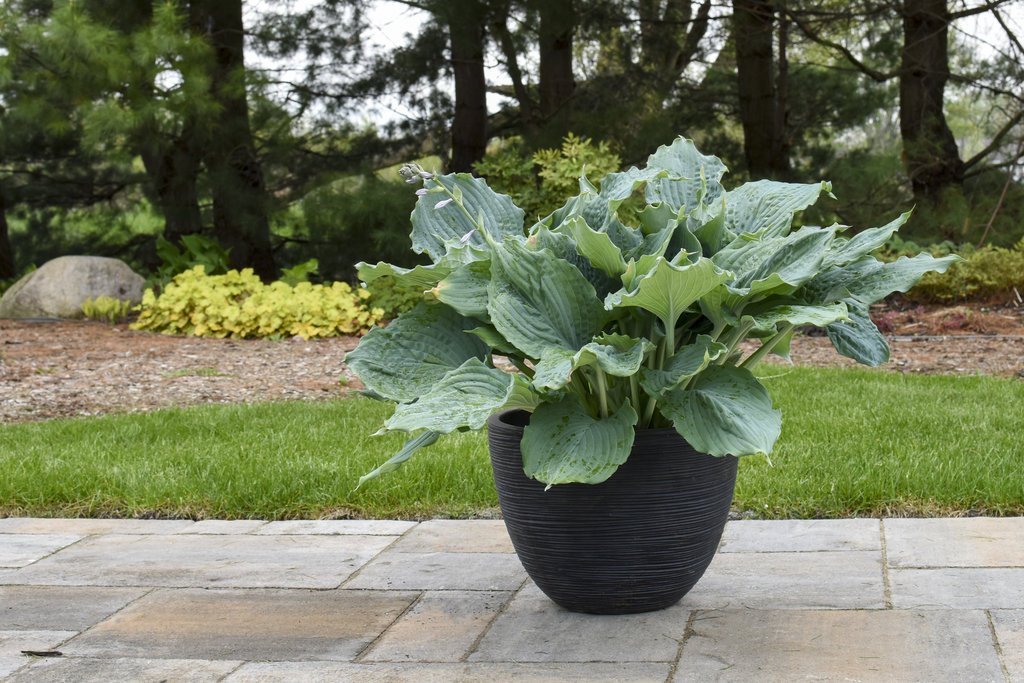 | 1. Plant Hostas in ContainersShowcase a single specimen in a decorative container and display in a prominent shady spot. Place the container on a deck or patio, use as a lawn accent, as a welcoming entryway specimen, or a focal point at the end of a pathway. Since plants in containers dry out more quickly than those in the ground, check moisture levels frequently during hot spells. Shadowland® Diamond Lake is a larger variety, with thick corrugated blue-green leaves that make a bold statement in the garden. |
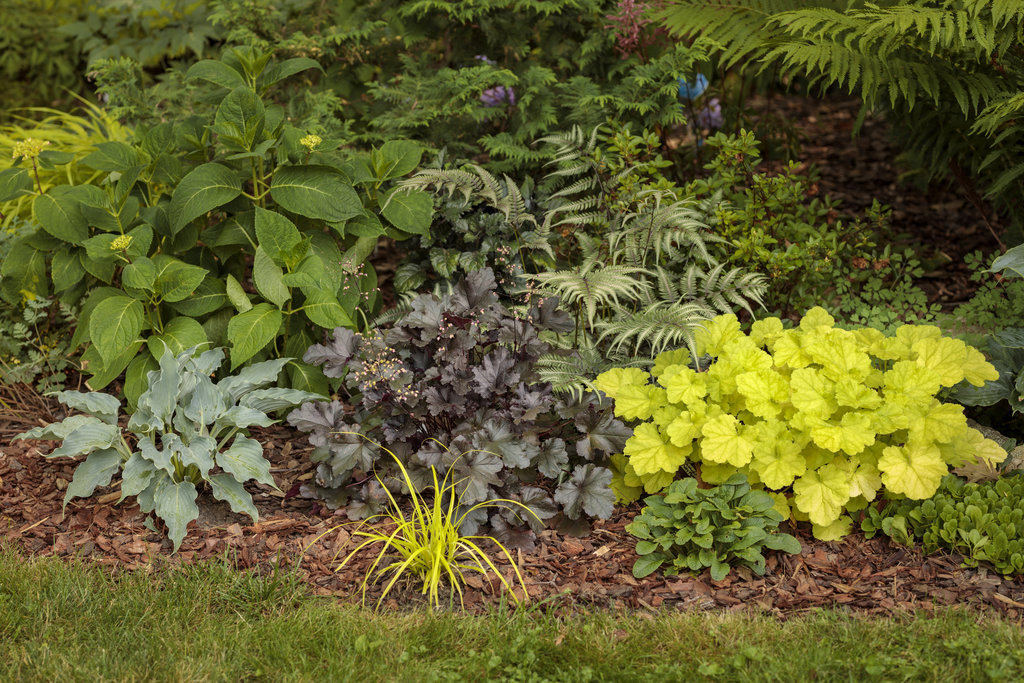 | 2. Combine With Other Woodland PlantsWhen gardening with hostas in a woodland setting, combine with other shade lovers. Include trees, shrubs and perennials with foliage in different sizes, colors and shapes, as well as flowers that bloom at different times. This engaging shade border features Shadowland® ‘Waterslide' hosta, Let’s Dance® Rave® reblooming hydrangea, Primo® ‘Black Pearl’ coral bells, and Primo® Pistachio Ambrosia coral bells. |
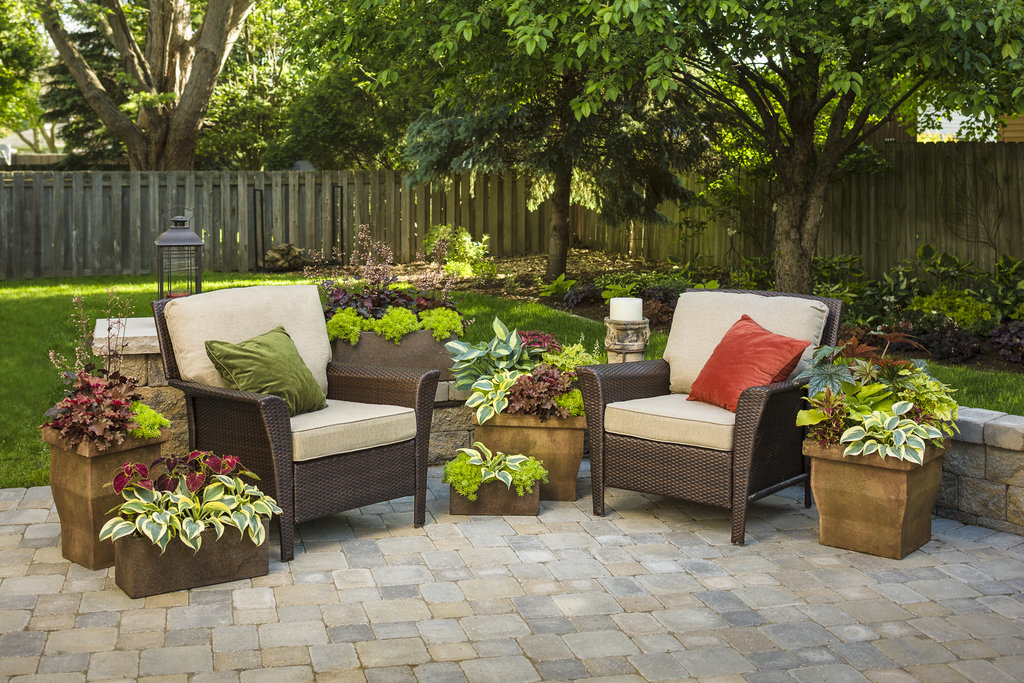 | 3. Group Potted Hostas on a PatioAdd elegance to a shaded patio by planting hostas in containers or as edging. For months of color, choose companion plants with different colored foliage and flowers. The hostas growing on this patio include Shadowland® ‘Hudson Bay’, ‘Autumn Frost’, and ‘Coast to Coast’, plus varieties of coleus, sedum, coral bells, foamy bells and begonia. |
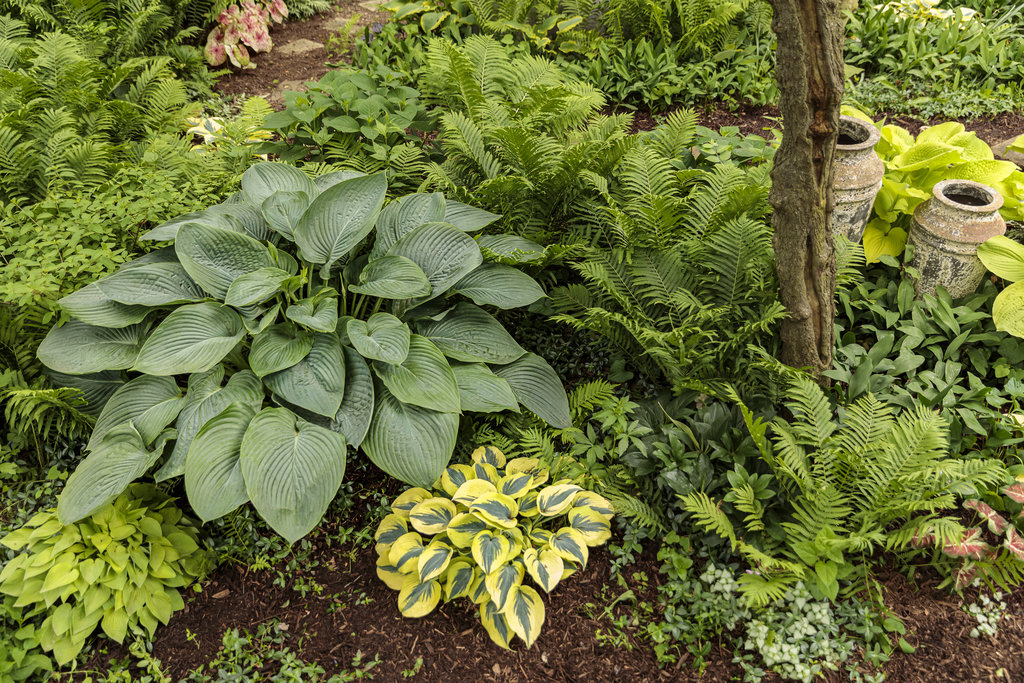 | 4. Create a Focal Point with a Large HostaFeature a large hosta specimen in an island bed or underneath a shade tree. Hostas come in many foliage colors, including shades of green, blue, blue-green, chartreuse, and gold. In this serene backyard, the fine green leaves of ferns provide a contrasting backdrop to showcase the blue-green textured foliage of Shadowland® 'Empress Wu'. Other hostas with chartreuse and variegated foliage add pops of bright color for additional contrast. |
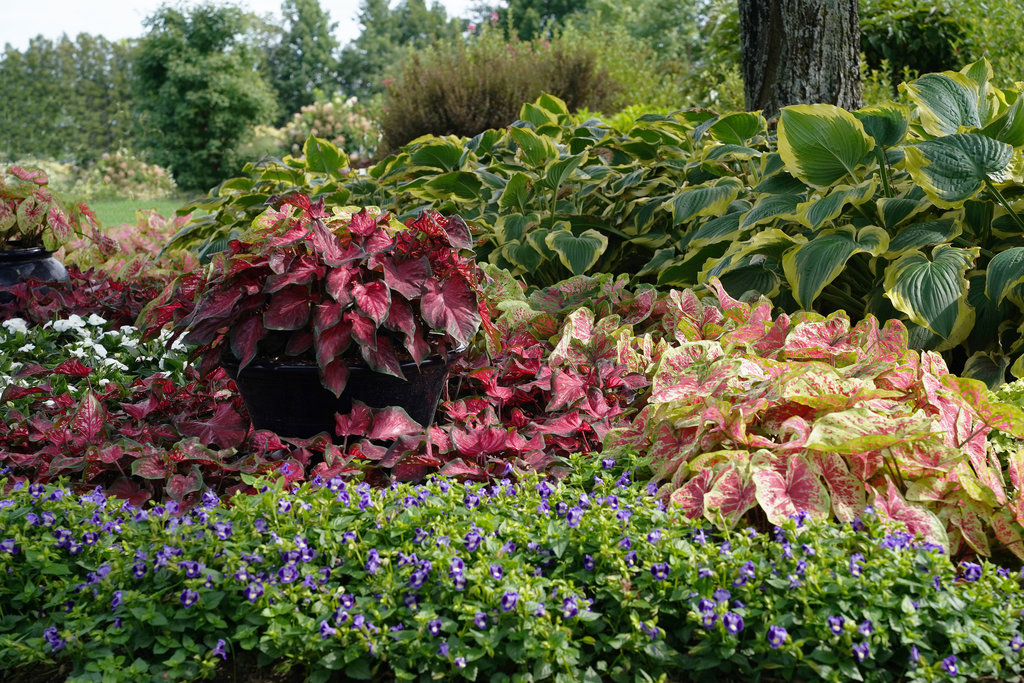 | 5. Plant a Row of Hostas as a Bold BackgroundMass a medium to large hosta variety at the rear of a woodland border as a background plant. Here, the bold variegation and large puckered foliage of Shadowland® ‘Seducer’ provides a stunning backdrop to the colorful hues of Heart to Heart® ‘Raspberry Moon’ caladium, Heart to Heart® ‘Scarlet Flame’ caladium, and Catalina® Midnight Blue wishbone flower. |
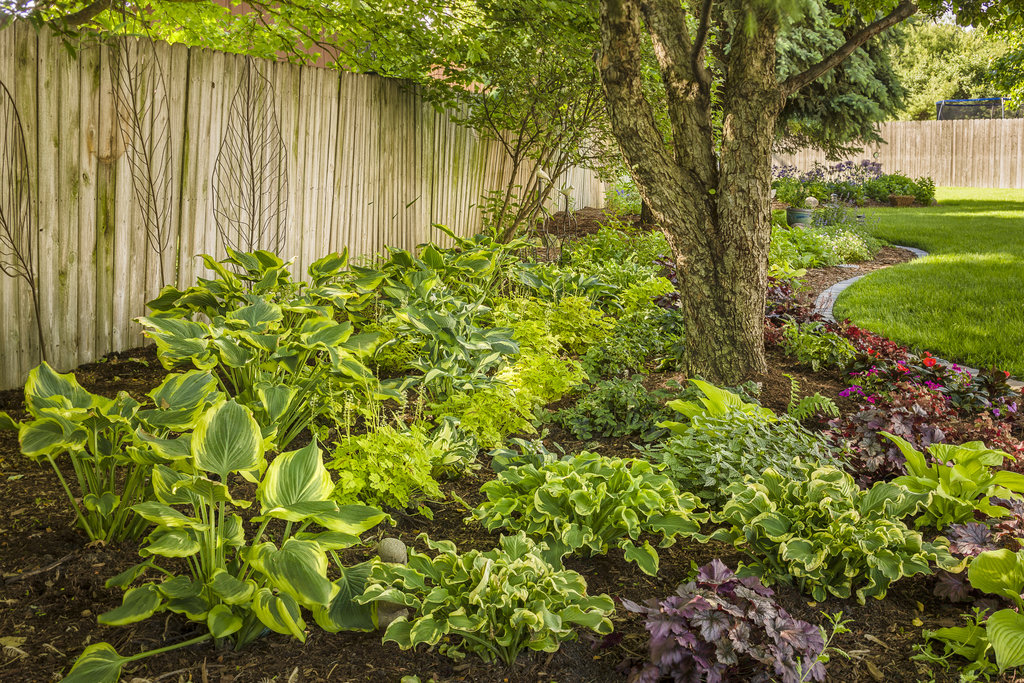 | 6. Brighten Deep Shade with Variegated or Gold TypesLighten up a deeply shaded fence line with variegated or gold foliaged hostas and other brightly colored perennials. Mass 3 to 5 varieties of the same plant together so the design doesn’t become too busy. Use tall varieties in the back, with short plants at the front. This spacious backyard shade border is planted with Shadowland® ‘Coast to Coast’, ‘Hudson Bay’, ‘Seducer’, and ‘Wheee’ hostas, along with Dolce® ‘Wildberry’ coral bells, and Fun and Games® ‘Eye Spy’ foamy bells. |
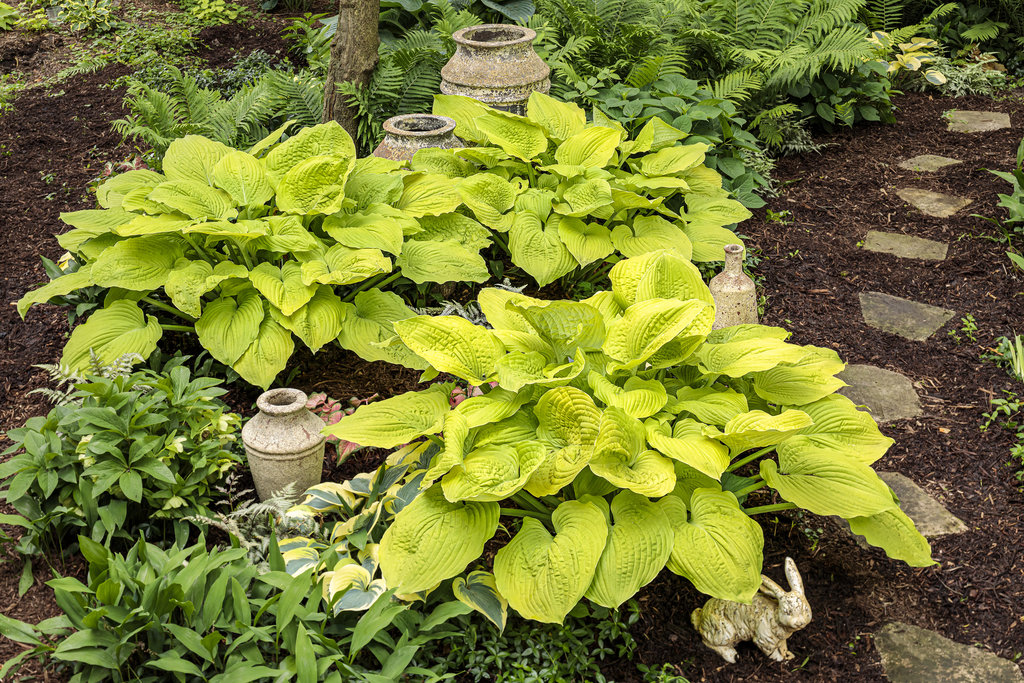 | 7. Edge a Path or BorderUse a small to medium-sized hosta such as Shadowland® ‘Coast to Coast’ as pathway or border edging. Mix in other hostas and shade perennials with contrasting colors, foliage patterns and shapes to create depth and drama. Add neutral-colored green plants such as ferns and vinca to help tie it all together. |
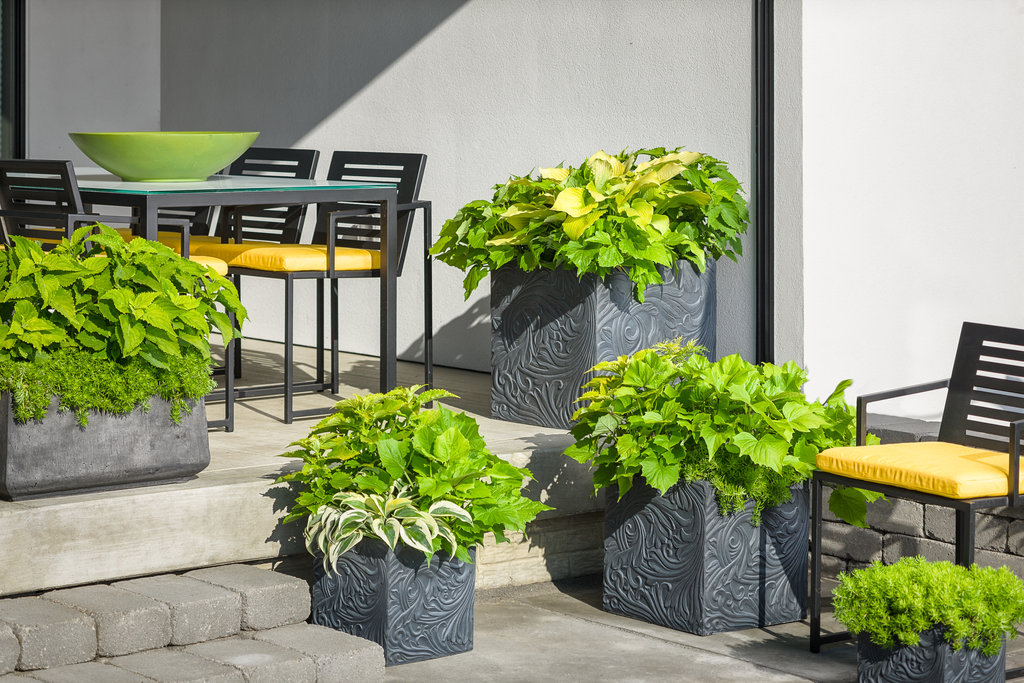 | 8. Contrast Foliage Colors in PlantersGroup containers together on a patio, deck or porch for a more impressive display. Use hostas with gold or creamy white variegated foliage as punctuation marks against serene green or chartreuse foliage to make the hostas stand out more. This artful arrangement includes Shadowland® ‘Autumn Frost’ and ‘Coast to Coast’ hostas, Proven Accents® Sweet Caroline Bewitched Green With Envy™ sweet potato vine, Colorblaze® Lime Time® coleus, and Lemon Coral® sedum. |
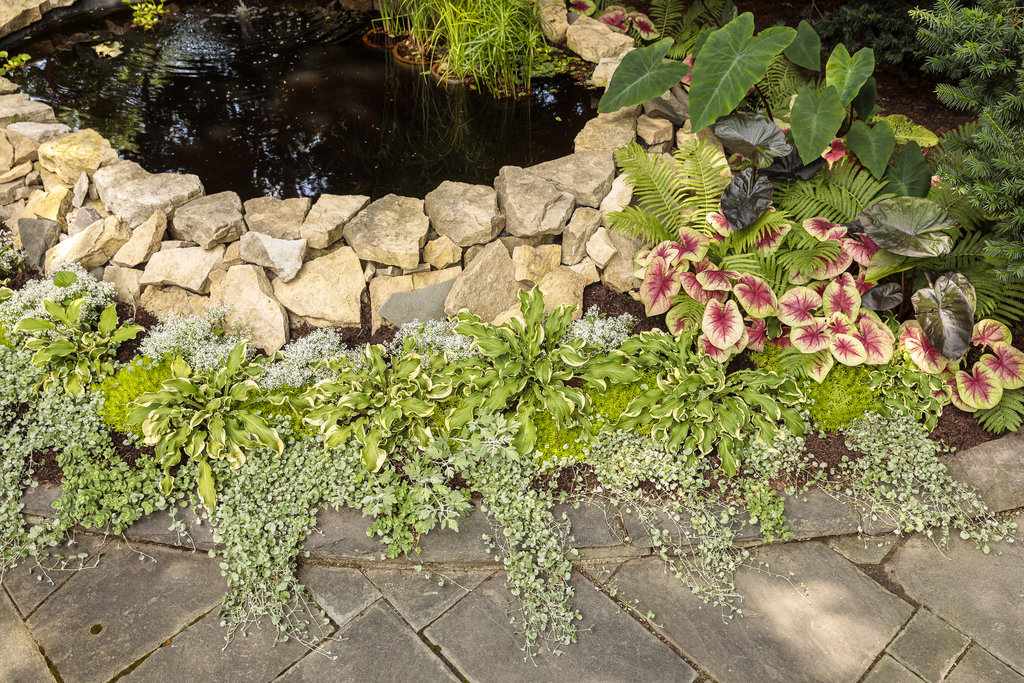 | 9. Soften the Edge of a Water FeatureAdorn the edge of a pond, pool, or stream with hostas and other shade lovers. Use a mix of green, silver, variegated and colored foliage, as well as white flowers to illuminate deeply shaded spots. This pond rimmed with rocks is softened with shade-loving perennials, annuals, tropicals and groundcovers. Plants include Shadowland® ‘Wheee!’ hosta, wormwood, dichondra, euphorbia and sedum. The bold tropical foliage of elephant’s ears and caladium add pops of color and texture. |
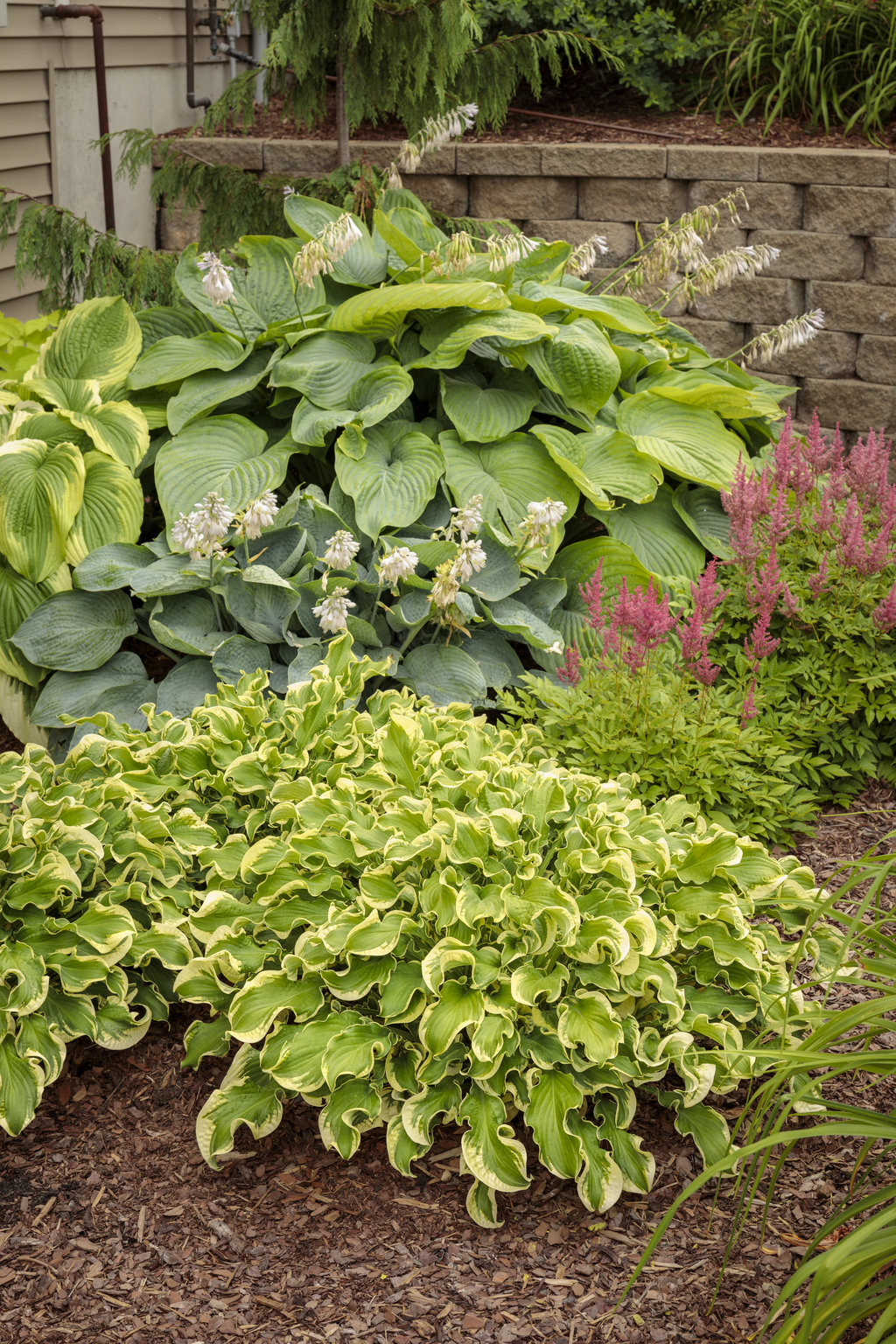 | 10. Mass for a Mosaic of ColorsMass different hosta varieties in shade gardens or along a slope for a mosaic of color. For a captivating display, use varieties with different sizes, leaf color, shapes, textures, and variegated patterns. This hosta planting includes the large bold leaves of Shadowland® ‘Empress Wu’ in the background and the small variegated crinkled leaves of Shadowland® ‘Wheee’, which is massed in the foreground. Hostas have the added benefit of flowers that bloom in summer, with some varieties being fragrant. |
CONSIDERATIONS FOR DESIGNING YOUR HOSTA GARDEN
When landscaping with hostas, consider these factors:
Light
Make sure your site receives the right amount of light. Hostas can take several hours of direct morning light, but need afternoon shade so hosta leaves won’t burn. Some varieties are more sun-tolerant than others, while others can grow in full shade. Make sure variegated varieties receive some direct sun for best coloring. Too little sun can cause variegation to fade, while too much sun can bleach out the colors.
Characteristics
Select hosta varieties based on their attributes of:
- Solid or patterned foliage
- Single, bi- or multi-colors
- Solid, striped or irregular patterns
- Smooth, crinkled or corrugated texture
- Rounded, pointed, elongated or heart-shaped leaves
- Flat, cupped or curly foliage
Size
Sizes range from miniature to giant. Choose hosta varieties that are in scale with the size of the garden area, and in relation to other nearby plants. Smaller varieties will get lost next to big plants, while larger varieties may overwhelm a more limited space. Allow enough room in your hosta garden for plants to grow to their mature size so they don’t become overcrowded.
Companion plants
Grow hostas alongside other plants with similar requirements for soil, light and water. For a garden with hostas, choose shade-loving companion plants with interesting foliage, and flowers that bloom at different times for compelling interest throughout the growing season.
Suitable companion plants include:
See more: 20 Best Hosta Companion Plants
Design tips
Mass 3 to 5 plants of the same hosta variety for greater visual impact. Don’t combine too many different variegated hostas together, which can make the design feel chaotic. Do mass a single white variegated or other patterned variety, or surround a single variegated specimen with solid colors.
Repeat the same variety or leaf color in different parts of the yard to create continuity. This will also help draw the eye through the landscape.
Use hardscape such as pathways and patios, along with accessories such as furniture, arbors and statuary to create structure and anchor your hosta garden beds.
For more elaborate projects, consult with a landscape designer or other professional to create a garden design.




